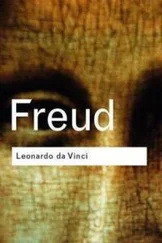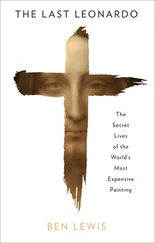Leonardo da Vinci - The Notebooks of Leonardo Da Vinci. Complete
Здесь есть возможность читать онлайн «Leonardo da Vinci - The Notebooks of Leonardo Da Vinci. Complete» — ознакомительный отрывок электронной книги совершенно бесплатно, а после прочтения отрывка купить полную версию. В некоторых случаях можно слушать аудио, скачать через торрент в формате fb2 и присутствует краткое содержание. Жанр: foreign_prose, foreign_home, visual_arts, foreign_antique, на английском языке. Описание произведения, (предисловие) а так же отзывы посетителей доступны на портале библиотеки ЛибКат.
- Название:The Notebooks of Leonardo Da Vinci. Complete
- Автор:
- Жанр:
- Год:неизвестен
- ISBN:нет данных
- Рейтинг книги:3 / 5. Голосов: 1
-
Избранное:Добавить в избранное
- Отзывы:
-
Ваша оценка:
- 60
- 1
- 2
- 3
- 4
- 5
The Notebooks of Leonardo Da Vinci. Complete: краткое содержание, описание и аннотация
Предлагаем к чтению аннотацию, описание, краткое содержание или предисловие (зависит от того, что написал сам автор книги «The Notebooks of Leonardo Da Vinci. Complete»). Если вы не нашли необходимую информацию о книге — напишите в комментариях, мы постараемся отыскать её.
The Notebooks of Leonardo Da Vinci. Complete — читать онлайн ознакомительный отрывок
Ниже представлен текст книги, разбитый по страницам. Система сохранения места последней прочитанной страницы, позволяет с удобством читать онлайн бесплатно книгу «The Notebooks of Leonardo Da Vinci. Complete», без необходимости каждый раз заново искать на чём Вы остановились. Поставьте закладку, и сможете в любой момент перейти на страницу, на которой закончили чтение.
Интервал:
Закладка:
Let 4 be the side of an illuminated surface 4 8, surrounding the cast shadow g e 4. And this spot 4 will be lighter than 8, because less shadow falls on it than on 8. Since 4 faces only the shadow i n ; and 8 faces and receives the shadow a e as well as i n which makes it twice as dark. And the same thing happens when you put the atmosphere and the sun in the place of shade and light.
[12] The distribution of shadow, originating in, and limited by, plane surfaces placed near to each other, equal in tone and directly opposite, will be darker at the ends than at the beginning, which will be determined by the incidence of the luminous rays. You will find the same proportion in the depth of the derived shadows a n as in the nearness of the luminous bodies m b , which cause them; and if the luminous bodies were of equal size you would still farther find the same proportion in the light cast by the luminous circles and their shadows as in the distance of the said luminous bodies.
[Footnote: The diagram originally placed between lines 3 and 4 is on Pl. VI, No. 3. In the diagram given above line 14 of the original, and here printed in the text, the words corpo luminoso [luminous body] are written in the circle m , luminoso in the circle b and ombroso [body in shadow] in the circle o .]
217
THAT PART OF THE REFLECTION WILL BE BRIGHTEST WHERE THE REFLECTED RAYS ARE SHORTEST.
[2] The darkness occasioned by the casting of combined shadows will be in conformity with its cause, which will originate and terminate between two plane surfaces near together, alike in tone and directly opposite each other.
[4] In proportion as the source of light is larger, the luminous and shadow rays will be more mixed together. This result is produced because wherever there is a larger quantity of luminous rays, there is most light, but where there are fewer there is least light, consequently the shadow rays come in and mingle with them.
[Footnote: Diagrams are inserted before lines 2 and 4.]
218
In all the proportions I lay down it must be understood that the medium between the bodies is always the same. [2] The smaller the luminous body the more distinct will the transmission of the shadows be.
[3] When of two opposite shadows, produced by the same body, one is twice as dark as the other though similar in form, one of the two lights causing them must have twice the diameter that the other has and be at twice the distance from the opaque body. If the object is lowly moved across the luminous body, and the shadow is intercepted at some distance from the object, there will be the same relative proportion between the motion of the derived shadow and the motion of the primary shadow, as between the distance from the object to the light, and that from the object to the spot where the shadow is intercepted; so that though the object is moved slowly the shadow moves fast.
[Footnote: There are diagrams inserted before lines 2 and 3 but they are not reproduced here. The diagram above line 6 is written upon as follows: at A lume (light), at B obbietto (body), at C ombra d'obbietto (shadow of the object).]
219
A luminous body will appear less brilliant when surrounded by a bright background.
[2] I have found that the stars which are nearest to the horizon look larger than the others because light falls upon them from a larger proportion of the solar body than when they are above us; and having more light from the sun they give more light, and the bodies which are most luminous appear the largest. As may be seen by the sun through a mist, and overhead; it appears larger where there is no mist and diminished through mist. No portion of the luminous body is ever visible from any spot within the pyramid of pure derived shadow.
[Footnote: Between lines 1 and 2 there is in the original a large diagram which does not refer to this text. ]
220
A body on which the solar rays fall between the thin branches of trees far apart will cast but a single shadow.
[2] If an opaque body and a luminous one are (both) spherical the base of the pyramid of rays will bear the same proportion to the luminous body as the base of the pyramid of shade to the opaque body.
[4] When the transmitted shadow is intercepted by a plane surface placed opposite to it and farther away from the luminous body than from the object [which casts it] it will appear proportionately darker and the edges more distinct.
[Footnote: The diagram which, in the original, is placed above line 2, is similar to the one, here given on page 73 (section 120).—The diagram here given in the margin stands, in the original, between lines 3 and 4.]
221
A body illuminated by the solar rays passing between the thick branches of trees will produce as many shadows as there are branches between the sun and itself.
Where the shadow-rays from an opaque pyramidal body are intercepted they will cast a shadow of bifurcate outline and various depth at the points. A light which is broader than the apex but narrower than the base of an opaque pyramidal body placed in front of it, will cause that pyramid to cast a shadow of bifurcate form and various degrees of depth.
If an opaque body, smaller than the light, casts two shadows and if it is the same size or larger, casts but one, it follows that a pyramidal body, of which part is smaller, part equal to, and part larger than, the luminous body, will cast a bifurcate shadow.
[Footnote: Between lines 2 and 3 there are in the original two large diagrams.]
IV.
Perspective of Disappearance
The theory of the "Prospettiva de' perdimenti" would, in many important details, be quite unintelligible if it had not been led up by the principles of light and shade on which it is based. The word "Prospettiva" in the language of the time included the principles of optics; what Leonardo understood by "Perdimenti" will be clearly seen in the early chapters, Nos. 222—224. It is in the very nature of the case that the farther explanations given in the subsequent chapters must be limited to general rules. The sections given as 227—231 "On indistinctness at short distances" have, it is true, only an indirect bearing on the subject; but on the other hand, the following chapters, 232—234, "On indistinctness at great distances," go fully into the matter, and in chapters 235—239, which treat "Of the importance of light and shade in the Perspective of Disappearance", the practical issues are distinctly insisted on in their relation to the theory. This is naturally followed by the statements as to "the effect of light or dark backgrounds on the apparent size of bodies" ( Nos. 240—250). At the end I have placed, in the order of the original, those sections from the MS. C which treat of the "Perspective of Disappearance" and serve to some extent to complete the treatment of the subject (251—262).
Definition (222. 223).
222
OF THE DIMINISHED DISTINCTNESS OF THE OUTLINES OF OPAQUE BODIES.
If the real outlines of opaque bodies are indistinguishable at even a very short distance, they will be more so at long distances; and, since it is by its outlines that we are able to know the real form of any opaque body, when by its remoteness we fail to discern it as a whole, much more must we fail to discern its parts and outlines.
223
OF THE DIMINUTION IN PERSPECTIVE OF OPAQUE OBJECTS.
Читать дальшеИнтервал:
Закладка:
Похожие книги на «The Notebooks of Leonardo Da Vinci. Complete»
Представляем Вашему вниманию похожие книги на «The Notebooks of Leonardo Da Vinci. Complete» списком для выбора. Мы отобрали схожую по названию и смыслу литературу в надежде предоставить читателям больше вариантов отыскать новые, интересные, ещё непрочитанные произведения.
Обсуждение, отзывы о книге «The Notebooks of Leonardo Da Vinci. Complete» и просто собственные мнения читателей. Оставьте ваши комментарии, напишите, что Вы думаете о произведении, его смысле или главных героях. Укажите что конкретно понравилось, а что нет, и почему Вы так считаете.












